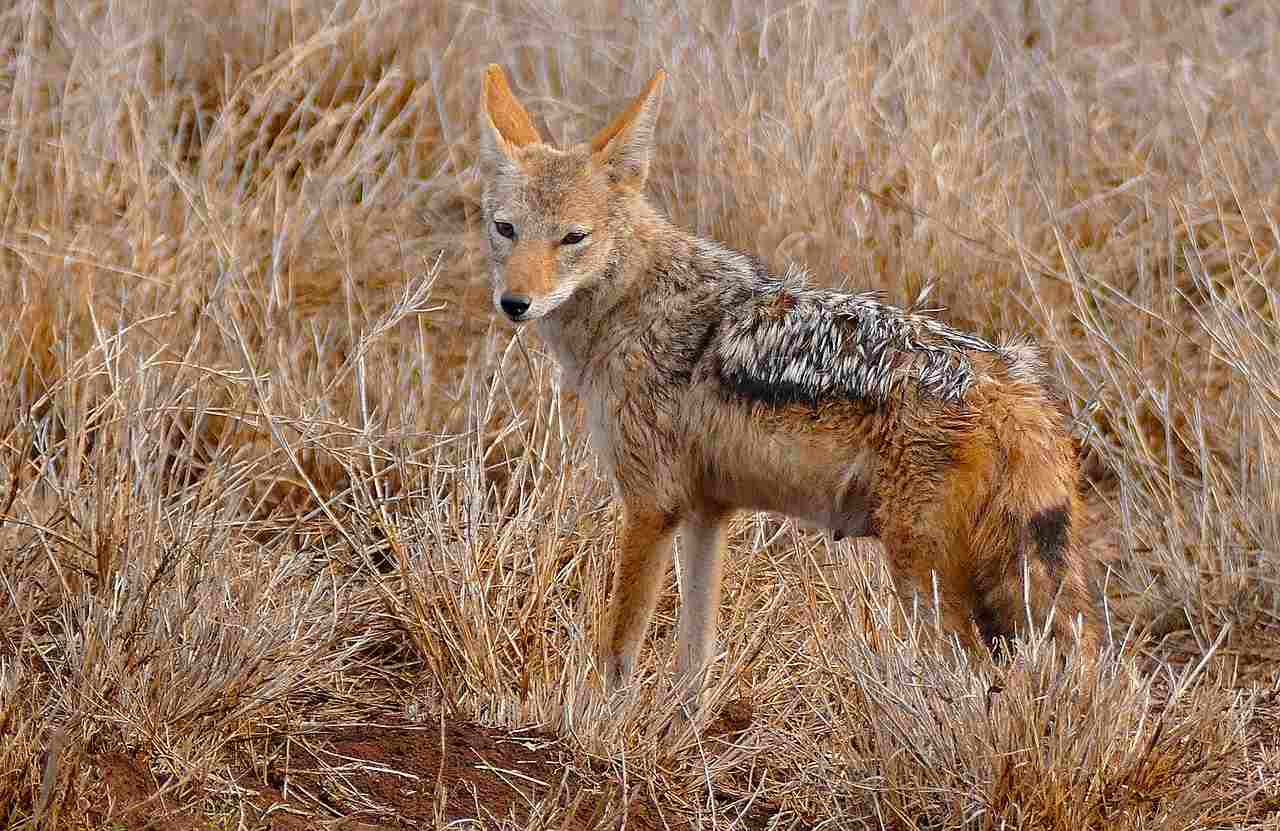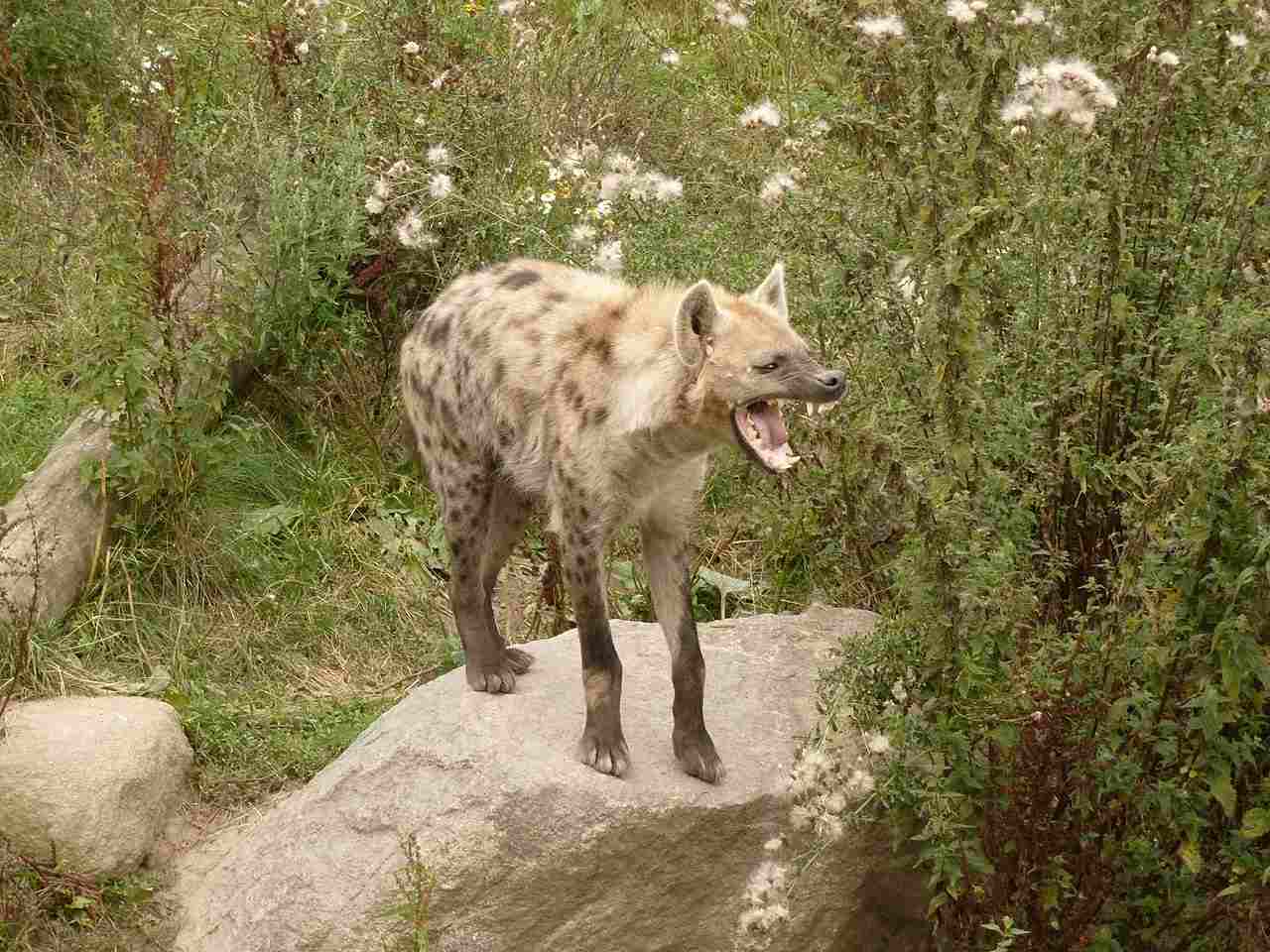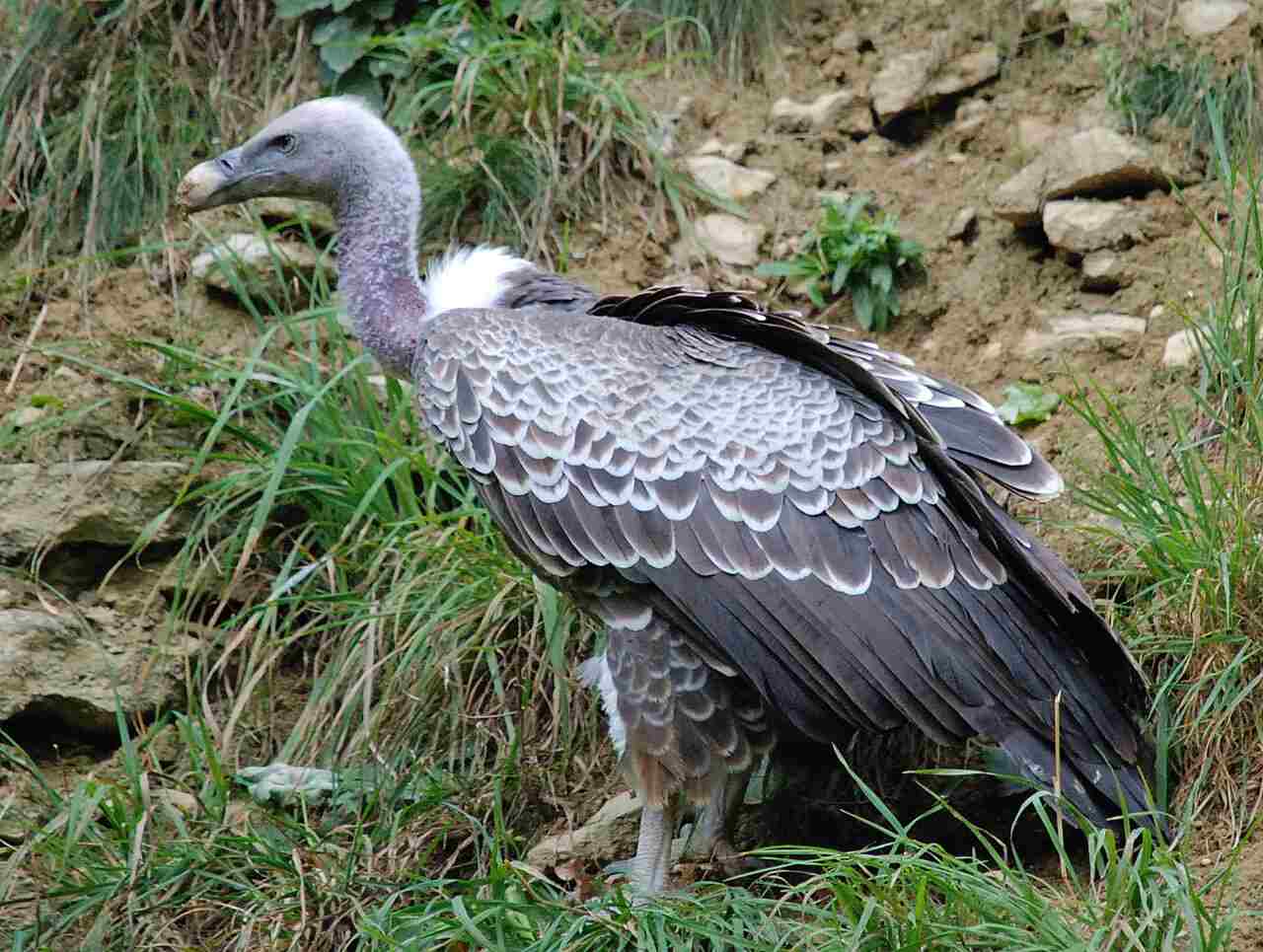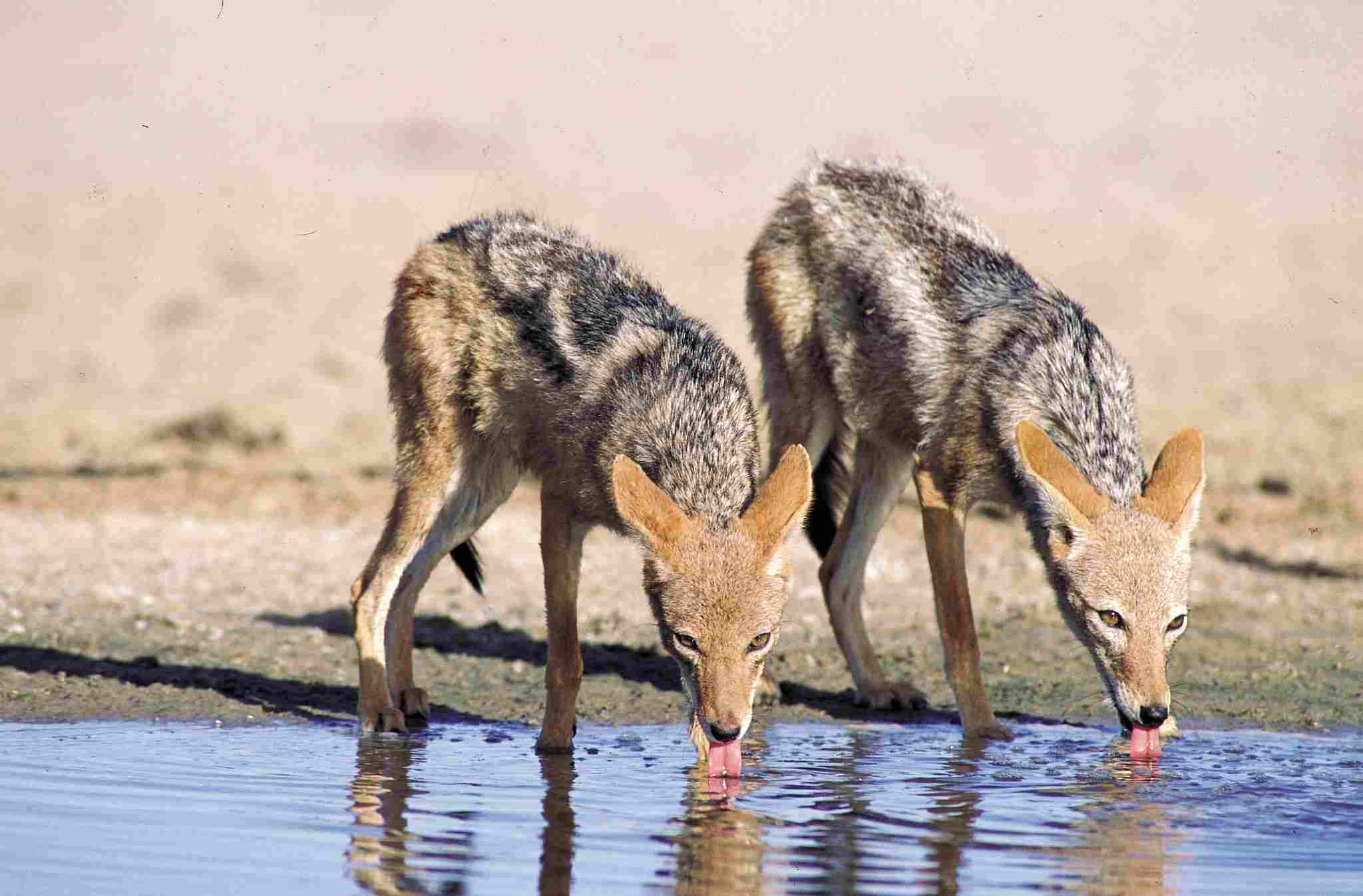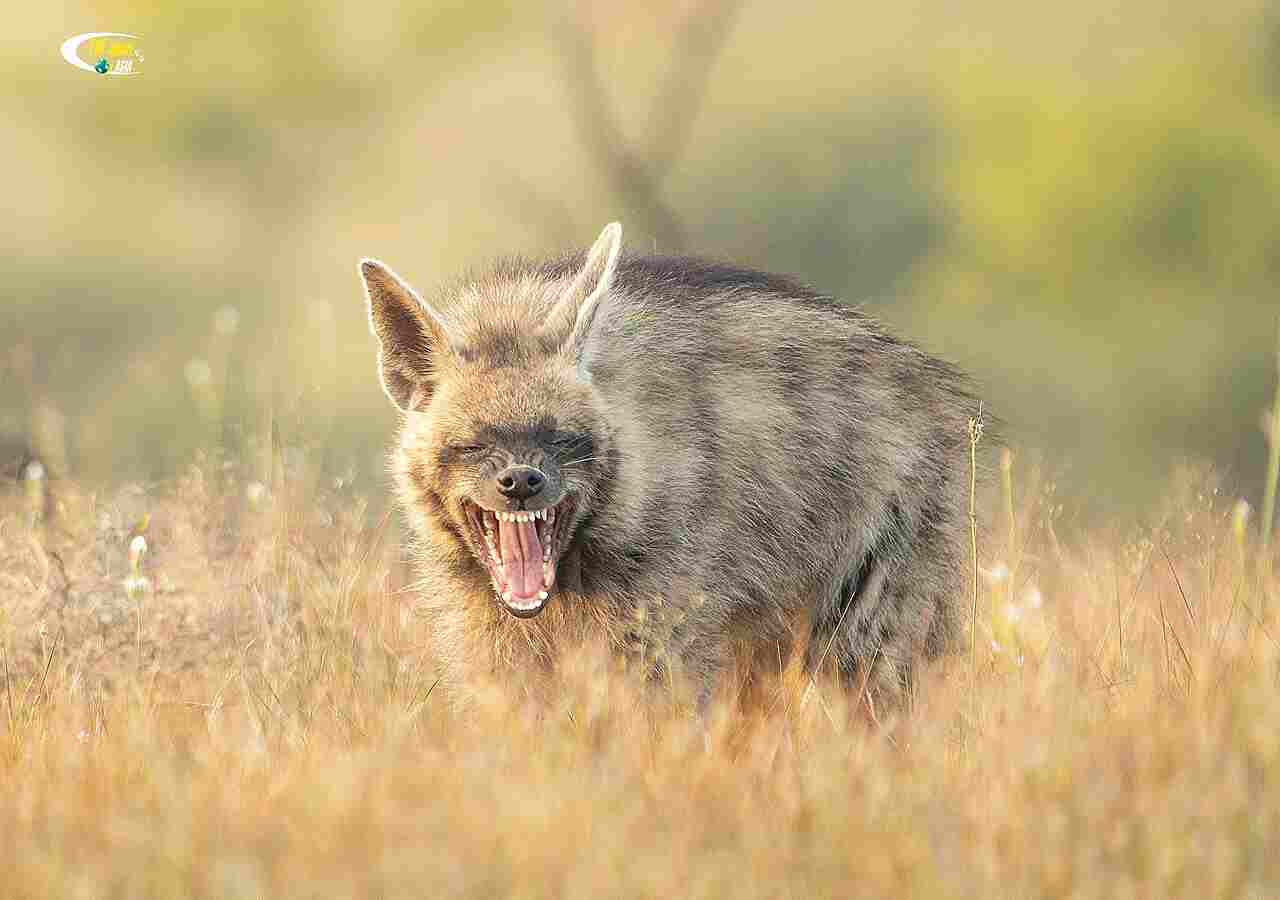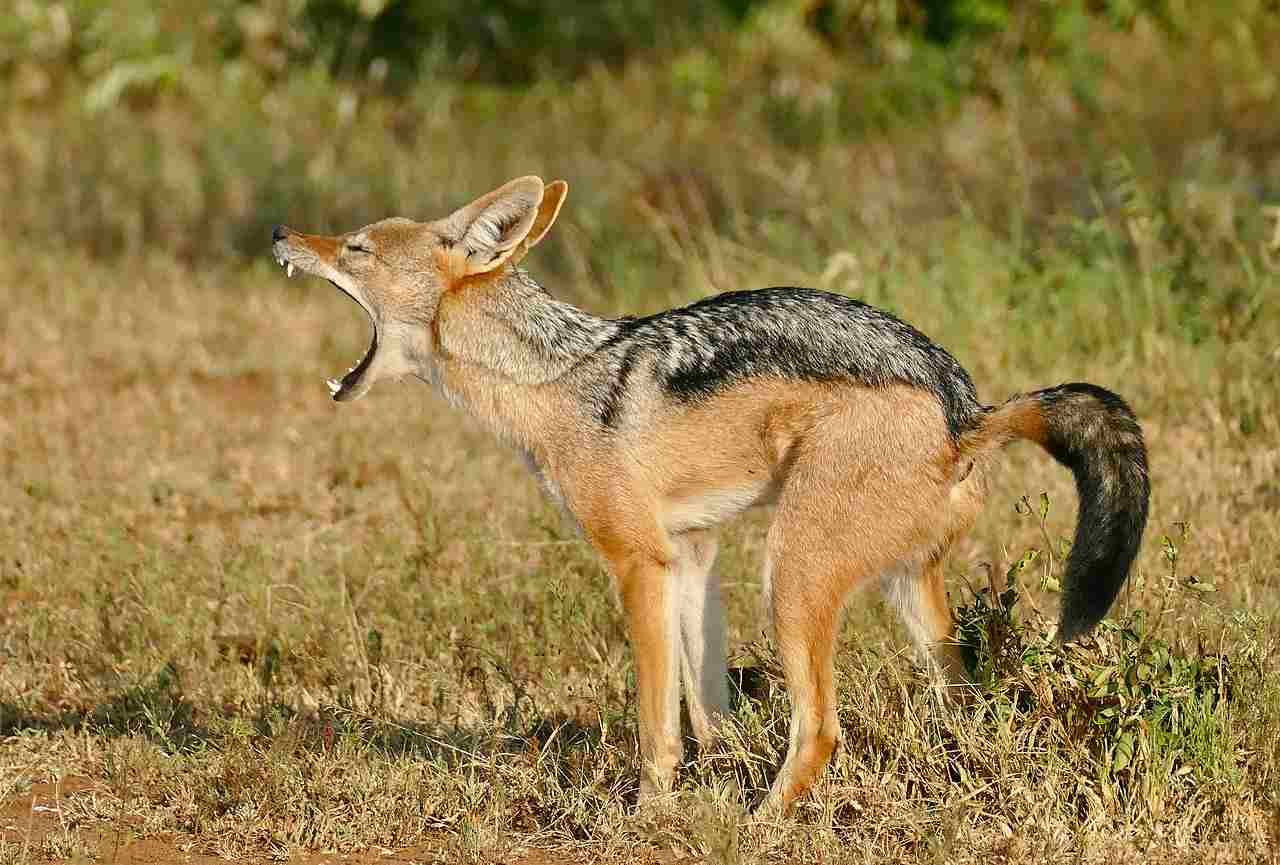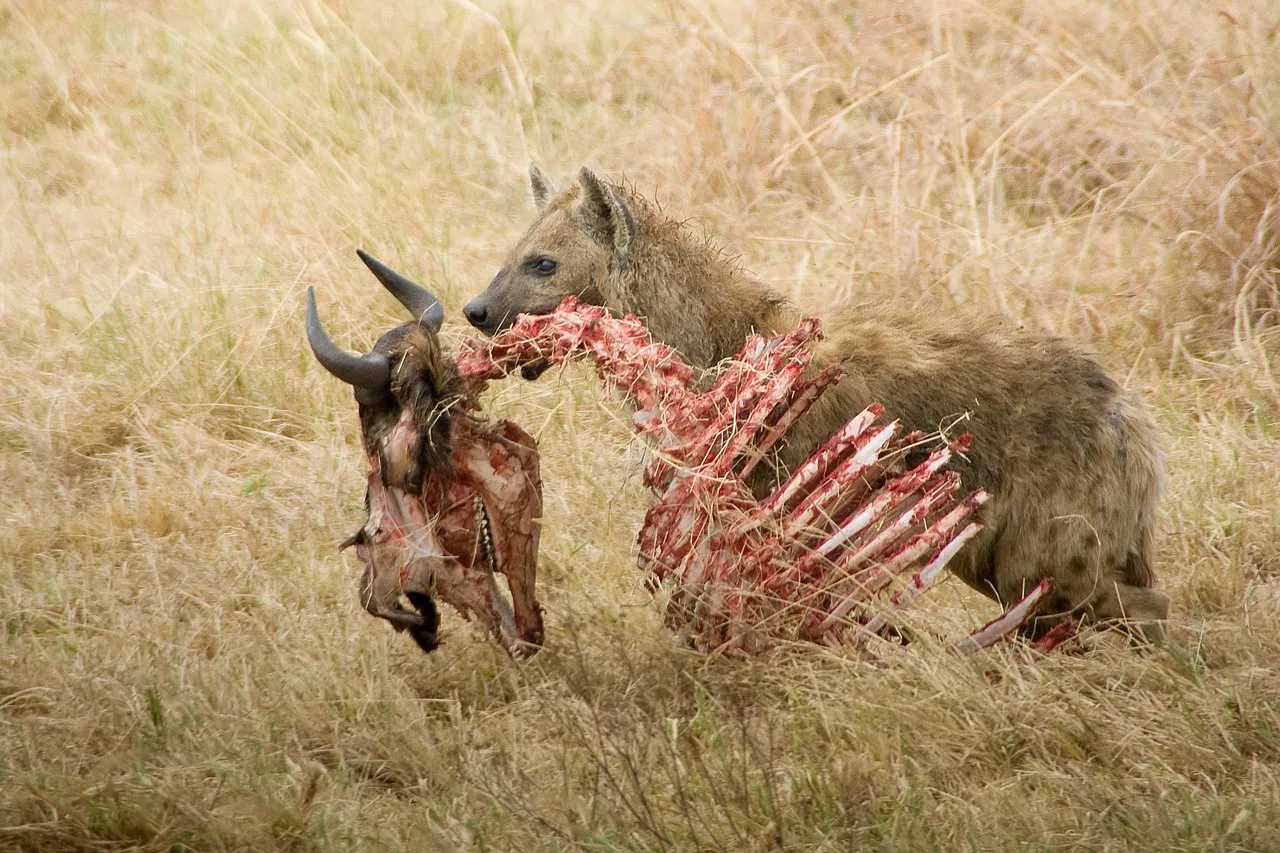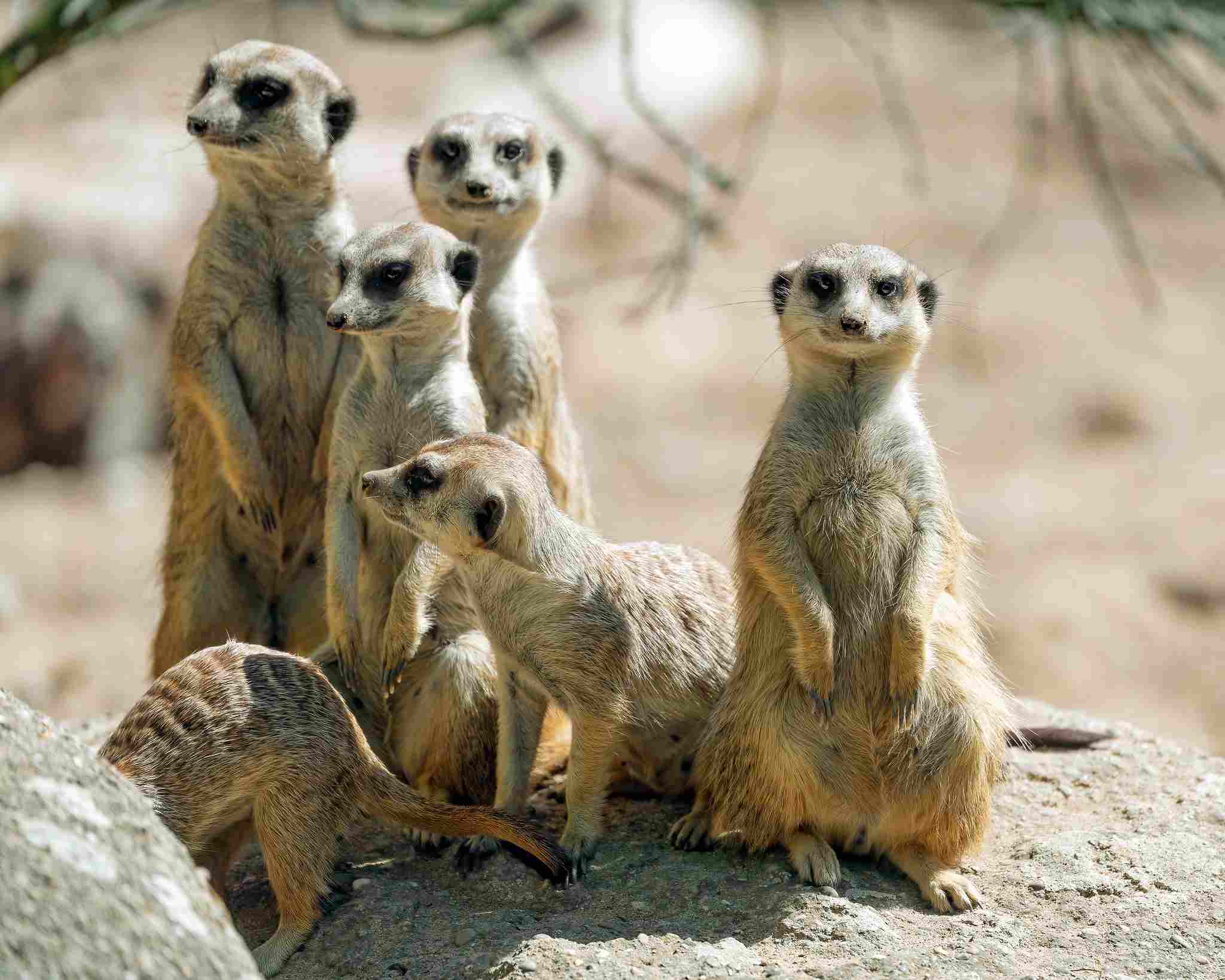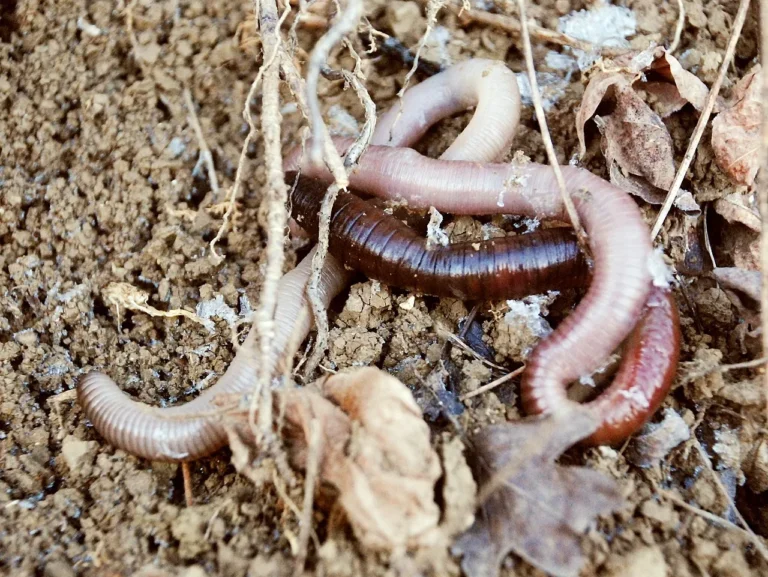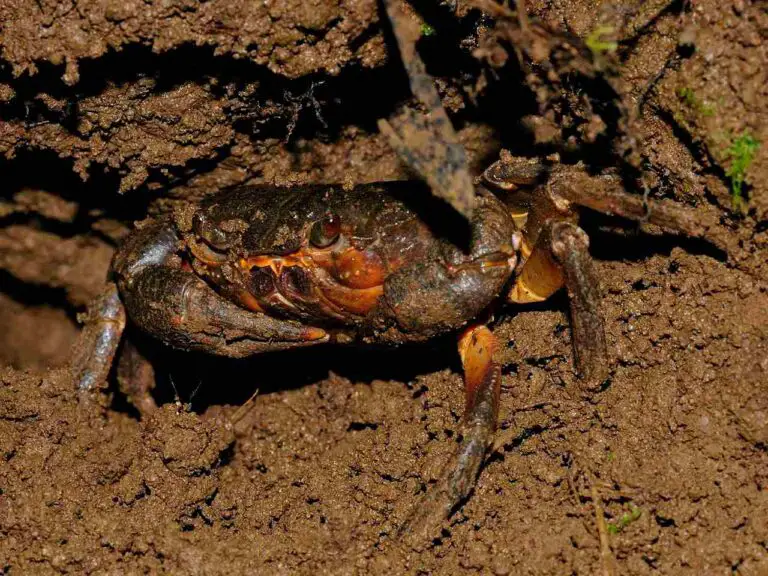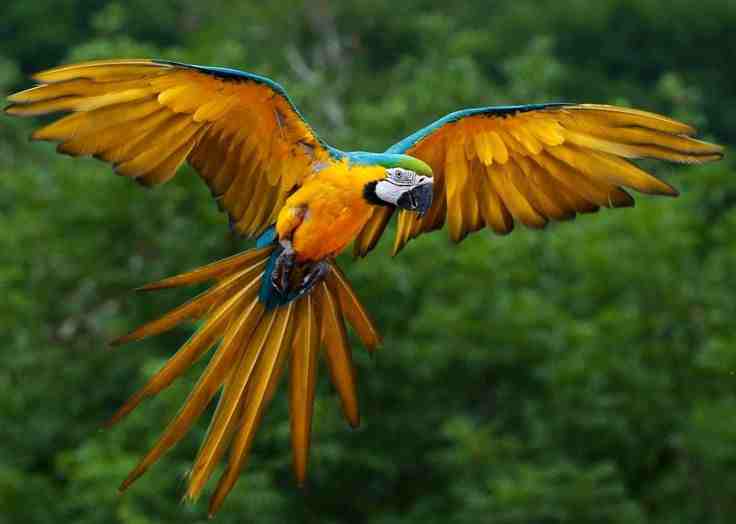7+ Scavengers In Grasslands And Their Characteristics
Examples of scavengers in grasslands are the spotted hyena, jackal, vulture, fox, coyote, bear, hawk, crow, and beetle. These animals play vital roles in ecosystem health by consuming carrion, recycling nutrients, and preventing the spread of disease. Despite facing various threats such as habitat loss and human persecution, scavengers contribute significantly to maintaining biodiversity and ecological balance in grassland habitats. Conservation efforts are essential to protect these species and ensure the resilience of grassland ecosystems.
1. Spotted Hyena
Spotted hyenas are formidable scavengers found in grasslands across Africa. Renowned for their robust builds and distinct spotted coats, they occupy a significant niche in these ecosystems. Despite their reputation as scavengers, they are also skilled hunters, capable of taking down prey much larger than themselves.
Their social structure is complex, revolving around matriarchal clans where females hold dominance over males. This social hierarchy enables efficient cooperation during hunts and scavenging activities. Hyenas have powerful jaws equipped with bone-crushing capabilities, allowing them to access and consume almost every part of a carcass, including bones.
In grassland habitats, hyenas play a crucial role in ecosystem dynamics by scavenging on carrion left behind by predators or from natural deaths. Their presence helps prevent the spread of disease by consuming and disposing of carcasses efficiently. Additionally, they compete with other scavengers, such as vultures and jackals, for access to carcasses, shaping the scavenger community’s dynamics within grassland ecosystems.
Overall, spotted hyenas are integral components of grassland ecosystems, contributing to nutrient cycling, maintaining ecological balance, and demonstrating remarkable adaptability to thrive in these dynamic environments.
2. Jackal
Jackals are opportunistic scavengers commonly found in grasslands, savannas, and deserts across Africa, Asia, and southeastern Europe. With their slender bodies and keen senses, they are well-adapted to scavenging on a variety of carrion, small mammals, insects, and fruits.
These social animals typically live in monogamous pairs or small family groups, cooperating to locate and scavenge food sources. Jackals are known for their vocalizations, including yips, howls, and yelps, which serve to communicate within their groups and establish territory boundaries.
In grassland habitats, jackals play a vital role in nutrient cycling by consuming and dispersing carrion. They also help regulate populations of small mammals and insects, contributing to the overall balance of the ecosystem. Despite their scavenging tendencies, jackals are also capable hunters, preying on small mammals, birds, and reptiles when the opportunity arises.
3. Vulture
Vultures are iconic scavengers found in grasslands, deserts, and open areas across the world. With their large wingspans and keen eyesight, they are adept at soaring high above the landscape in search of carrion. Vultures play a crucial role in cleaning up carcasses, preventing the spread of disease, and maintaining ecosystem health.
These birds are highly specialized for scavenging, with powerful beaks and stomach acids capable of digesting even the toughest animal remains. In grassland habitats, vultures often gather in large groups, known as wakes or committees, around carcasses, where they compete for access to food.
Despite facing threats such as habitat loss, poisoning, and collisions with power lines, vulture populations remain essential for maintaining the balance of grassland ecosystems. Their efficient scavenging behaviors ensure that nutrients are recycled back into the environment, benefiting a wide range of organisms.
4. Fox
Foxes are adaptable scavengers found in a variety of habitats, including grasslands, forests, and urban areas, across the Northern Hemisphere. With their bushy tails and pointed snouts, they are skilled hunters and scavengers, feeding on a diverse array of prey, including small mammals, birds, insects, fruits, and carrion.
These solitary animals are known for their intelligence and cunning hunting strategies. In grassland habitats, foxes scavenge on carrion left behind by larger predators or from natural deaths. They also hunt small mammals, such as mice, rabbits, and voles, helping to control their populations and maintain ecological balance.
Foxes play a significant role in grassland ecosystems by regulating prey populations, recycling nutrients through scavenging, and serving as prey for larger predators. Their adaptability to changing environments and resource availability underscores their importance as key players in these dynamic ecosystems.
5. Coyote
Coyotes are highly adaptable scavengers found in various habitats, including grasslands, deserts, forests, and urban areas, throughout North and Central America. With their lean bodies, bushy tails, and keen senses, they are opportunistic hunters and scavengers, feeding on a wide range of prey, carrion, fruits, and vegetation.
These canids are known for their intelligence and versatility, enabling them to thrive in diverse environments. In grassland habitats, coyotes play a crucial role in controlling populations of small mammals, such as rodents and rabbits, which helps prevent overgrazing and habitat degradation.
Coyotes often form family groups consisting of a breeding pair and their offspring, cooperating to hunt and scavenge for food. Their howls and yips serve as communication tools within their groups and help establish territory boundaries.
Despite facing challenges such as habitat loss, persecution, and competition with humans, coyote populations persist in grassland ecosystems, contributing to their overall health and functioning.
6. Bear
Bears are powerful scavengers found in various habitats, including grasslands, forests, mountains, and tundra, across North America, Europe, and Asia. With their massive size, sharp claws, and keen sense of smell, they are formidable predators and opportunistic feeders, capable of scavenging on carrion, fruits, nuts, insects, and vegetation.
These solitary animals are known for their strength and adaptability, able to exploit a wide range of food sources throughout the year. In grassland habitats, bears may scavenge on carcasses left behind by other predators or from natural deaths, supplementing their diet with plant matter, such as grasses and roots.
Bears play a significant role in nutrient cycling by consuming and dispersing seeds and organic matter across landscapes. Their presence helps maintain ecosystem balance and diversity, shaping vegetation dynamics and providing food for scavengers and decomposers.
Despite facing threats such as habitat fragmentation, poaching, and conflicts with humans, bear populations continue to play an essential role in grassland ecosystems, highlighting the importance of conservation efforts to protect these iconic species.
7. Hawk
Hawks are agile scavengers found in grasslands, forests, deserts, and open areas across the world. With their keen eyesight, powerful talons, and soaring flight, they are skilled hunters and scavengers, feeding on a variety of prey, including small mammals, birds, reptiles, insects, and carrion.
These birds of prey are known for their hunting prowess and adaptability to different habitats and prey types. In grassland habitats, hawks may scavenge on carrion left behind by other predators or from natural deaths, supplementing their diet with live prey caught using their sharp talons.
Hawks play a vital role in controlling populations of small mammals and birds, helping to maintain ecological balance and prevent overgrazing and habitat degradation. Their presence also provides opportunities for other scavengers, such as vultures and foxes, to access carrion resources.
Despite facing threats such as habitat loss, pesticide poisoning, and collisions with vehicles and structures, hawk populations continue to contribute to the health and functioning of grassland ecosystems, highlighting the importance of conservation efforts to protect these iconic birds.
8. Crow
Crows are highly adaptable scavengers found in various habitats, including grasslands, forests, urban areas, and agricultural landscapes, across the world. With their glossy black feathers, sharp beaks, and intelligent minds, they are opportunistic feeders, capable of scavenging on a wide range of food sources, including carrion, insects, small mammals, fruits, seeds, and human leftovers.
These social birds are known for their complex behaviors, including problem-solving, tool use, and vocal communication. In grassland habitats, crows often gather in large flocks, known as murders, to scavenge on carrion left behind by predators or from roadkill. They also hunt for small mammals and insects, helping to control pest populations and maintain ecological balance.
Crows play a significant role in nutrient cycling by consuming and dispersing organic matter across landscapes. Their scavenging behaviors contribute to the overall health and functioning of grassland ecosystems, benefiting a wide range of organisms, including plants, scavengers, and decomposers.
Despite facing challenges such as habitat destruction, pollution, and persecution by humans, crow populations remain resilient and adaptable, highlighting their importance as key players in these dynamic ecosystems.
9. Beetle
Beetles are diverse and abundant scavengers found in virtually every habitat on Earth, including grasslands, forests, deserts, wetlands, and urban areas. With over 400,000 species described to date, they represent one of the largest and most ecologically important groups of insects, playing vital roles in nutrient cycling, decomposition, and ecosystem functioning.
These insects vary greatly in size, shape, and behavior, with some species specializing in scavenging on carrion, dung, decaying plant matter, or fungi. In grassland habitats, beetles fulfill essential roles as decomposers, breaking down organic matter and recycling nutrients back into the soil.
Beetles also serve as food sources for a wide range of predators, including birds, mammals, reptiles, and other insects, contributing to the intricate food webs that characterize grassland ecosystems. Their activities help maintain soil health, aerate the ground, and promote plant growth, ultimately shaping the structure and dynamics of grassland communities.
Despite their small size and often overlooked presence, beetles are indispensable contributors to the functioning and resilience of grassland ecosystems, underscoring the importance of conserving their diversity and habitats.
*Summary
-
Spotted Hyena:
-
Formidable scavengers in African grasslands.
-
Strong jaws for consuming carrion, bones included.
-
Matriarchal clan structure for efficient cooperation.
-
Play a crucial role in preventing disease spread and shaping scavenger community dynamics.
-
-
Jackal:
-
Opportunistic scavengers found across Africa and Asia.
-
Social animals living in monogamous pairs or small family groups.
-
Known for vocalizations and keen senses.
-
Contribute to nutrient cycling and help regulate prey populations in grassland habitats.
-
-
Vulture:
-
Iconic scavengers found worldwide in open areas.
-
Specialized for scavenging with powerful beaks and stomach acids.
-
Gather in large groups around carcasses to compete for food.
-
Crucial for cleaning up carrion, preventing disease spread, and maintaining ecosystem balance.
-
-
Fox:
-
Adaptable scavengers found in various habitats across the Northern Hemisphere.
-
Solitary animals with intelligence and cunning hunting strategies.
-
Contribute to nutrient cycling and prey regulation in grassland ecosystems.
-
Feed on carrion, small mammals, birds, insects, and vegetation.
-
-
Coyote:
-
Highly adaptable scavengers found in North and Central America.
-
Form family groups for hunting and scavenging.
-
Contribute to prey regulation and nutrient cycling in grassland habitats.
-
Feed on a diverse range of prey, carrion, fruits, and vegetation.
-
-
Bear:
-
Powerful scavengers found across North America, Europe, and Asia.
-
Solitary animals with massive size and strength.
-
Play a significant role in nutrient cycling and shaping vegetation dynamics.
-
Feed on carrion, fruits, nuts, insects, and vegetation in grassland habitats.
-
-
Hawk:
-
Agile scavengers found worldwide in various habitats.
-
Known for hunting prowess and adaptability.
-
Contribute to prey regulation and nutrient cycling in grassland ecosystems.
-
Feed on small mammals, birds, reptiles, insects, and carrion.
-
-
Crow:
-
Highly adaptable scavengers found globally in diverse habitats.
-
Social birds with complex behaviors and vocal communication.
-
Contribute to nutrient cycling and pest control in grassland ecosystems.
-
Feed on carrion, insects, small mammals, fruits, seeds, and human leftovers.
-
-
Beetle:
-
Diverse and abundant scavengers found in all habitats.
-
Essential roles in nutrient cycling, decomposition, and ecosystem functioning.
-
Contribute to soil health, plant growth, and food webs in grassland ecosystems.
-
Serve as food sources for a wide range of predators and help maintain ecosystem resilience.
-
| Scavenger | Key Points |
| Spotted Hyena |
– Formidable scavengers in African grasslands – Strong jaws for consuming carrion, bones included – Matriarchal clan structure for efficient cooperation – Play a crucial role in preventing disease spread and shaping scavenger community dynamics
|
| Jackal |
– Opportunistic scavengers found across Africa and Asia – Social animals living in monogamous pairs or small family groups – Known for vocalizations and keen senses – Contribute to nutrient cycling and help regulate prey populations in grassland habitats
|
| Vulture |
– Iconic scavengers found worldwide in open areas – Specialized for scavenging with powerful beaks and stomach acids – Gather in large groups around carcasses to compete for food – Crucial for cleaning up carrion, preventing disease spread, and maintaining ecosystem balance
|
| Fox |
– Adaptable scavengers found in various habitats across the Northern Hemisphere – Solitary animals with intelligence and cunning hunting strategies – Contribute to nutrient cycling and prey regulation in grassland ecosystems – Feed on carrion, small mammals, birds, insects, and vegetation
|
| Coyote |
– Highly adaptable scavengers found in North and Central America – Form family groups for hunting and scavenging – Contribute to prey regulation and nutrient cycling in grassland habitats – Feed on a diverse range of prey, carrion, fruits, and vegetation
|
| Bear |
– Powerful scavengers found across North America, Europe, and Asia – Solitary animals with massive size and strength – Play a significant role in nutrient cycling and shaping vegetation dynamics – Feed on carrion, fruits, nuts, insects, and vegetation in grassland habitats
|
| Hawk |
– Agile scavengers found worldwide in various habitats – Known for hunting prowess and adaptability – Contribute to prey regulation and nutrient cycling in grassland ecosystems – Feed on small mammals, birds, reptiles, insects, and carrion
|
| Crow |
– Highly adaptable scavengers found globally in diverse habitats – Social birds with complex behaviors and vocal communication – Contribute to nutrient cycling and pest control in grassland ecosystems – Feed on carrion, insects, small mammals, fruits, seeds, and human leftovers
|
| Beetle |
– Diverse and abundant scavengers found in all habitats – Essential roles in nutrient cycling, decomposition, and ecosystem functioning – Contribute to soil health, plant growth, and food webs in grassland ecosystems – Serve as food sources for a wide range of predators and help maintain ecosystem resilience
|
Related FAQs
Q: What role do scavengers play in ecosystems? A: Scavengers play a crucial role in ecosystems by feeding on carrion and organic matter, which helps recycle nutrients back into the environment. They also help clean up dead organisms, preventing the spread of disease and maintaining ecosystem health.
Q: How do scavengers find carrion in grassland habitats? A: Scavengers use a combination of keen senses, including smell and sight, to locate carrion in grassland habitats. They may also follow other scavengers or monitor areas frequented by predators to find carcasses.
Q: Are scavengers important for maintaining biodiversity in grasslands? A: Yes, scavengers contribute to maintaining biodiversity in grasslands by controlling populations of small mammals and insects, which helps prevent overgrazing and habitat degradation. They also provide food for other organisms and help shape ecosystem dynamics.
Q: What are some threats to scavengers in grassland ecosystems? A: Scavengers in grassland ecosystems face threats such as habitat loss, human persecution, poisoning from pesticides, and collisions with vehicles and structures. These threats can lead to declines in scavenger populations and disrupt ecosystem functioning.
Q: How can we help protect scavengers in grassland habitats? A: Conservation efforts aimed at protecting grassland habitats, reducing human-wildlife conflicts, and minimizing the use of pesticides can help safeguard scavenger populations. Additionally, promoting awareness and appreciation of the ecological roles of scavengers is essential for their conservation.
